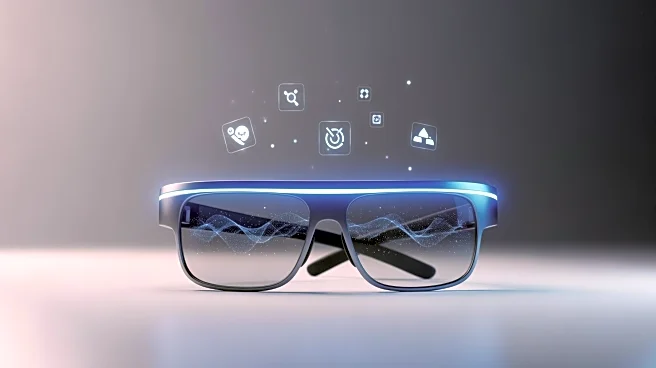What's Happening?
The year 2025 is set to be pivotal for augmented reality (AR) glasses, with several major companies and startups unveiling new prototypes that could redefine how consumers interact with technology. Viture,
a lesser-known company, has gained attention for its AI-driven visor, which offers a compact form factor and advanced on-device AI features. Meta is expanding its smart-glasses availability, focusing on comfort and social features to make AR glasses a part of daily life. Apple is working on its 'Liquid Glass' design, aiming to combine aesthetics with functionality. Samsung and Google are collaborating to integrate AR glasses with Android devices, enhancing cross-device continuity. Snap plans to launch consumer AR glasses in 2026, which could drive competition and lower prices. RayNeo showcased bright optical engines in lightweight frames at CES 2025, indicating improvements in pixel clarity and weight. The success of these devices will depend on their ability to offer practical benefits beyond just looking cool.
Why It's Important?
The advancements in AR glasses technology in 2025 could significantly impact the consumer technology landscape. As companies like Meta, Apple, and Snap push the boundaries of AR, consumers may see a shift from traditional smartphones to wearable devices that offer enhanced functionality and convenience. This transition could lead to increased competition among tech giants, driving innovation and potentially lowering costs for consumers. The integration of AR glasses with existing ecosystems, such as Android, could make these devices more accessible to mainstream users, further accelerating adoption. For developers and creators, the focus will be on optimizing short, useful AR experiences that enhance daily tasks. The convergence of better optics, platform bets, and startup innovations suggests that 2025 could be a turning point for AR technology.
What's Next?
As AR glasses continue to evolve, consumers and creators will need to consider ecosystem compatibility, app availability, and practical use cases when deciding whether to adopt these new technologies. The competition among major players like Meta, Apple, and Snap is likely to intensify, leading to faster innovation cycles and potentially more affordable options. Buyers may choose to wait for proven models in 2026, while creators focus on developing applications that leverage the unique capabilities of AR glasses. The success of these devices will depend on their ability to integrate seamlessly into daily life and offer tangible benefits over existing technologies.
Beyond the Headlines
The rise of AR glasses could have broader implications for privacy and data security, as these devices may collect and process more personal information than traditional smartphones. Ethical considerations around the use of AI in AR glasses, such as facial recognition and data tracking, will need to be addressed by manufacturers and regulators. Additionally, the cultural impact of widespread AR adoption could change how people interact with their environment and each other, potentially leading to new social norms and behaviors. As AR technology becomes more mainstream, it will be important to consider these deeper implications and ensure that the benefits outweigh the potential risks.













